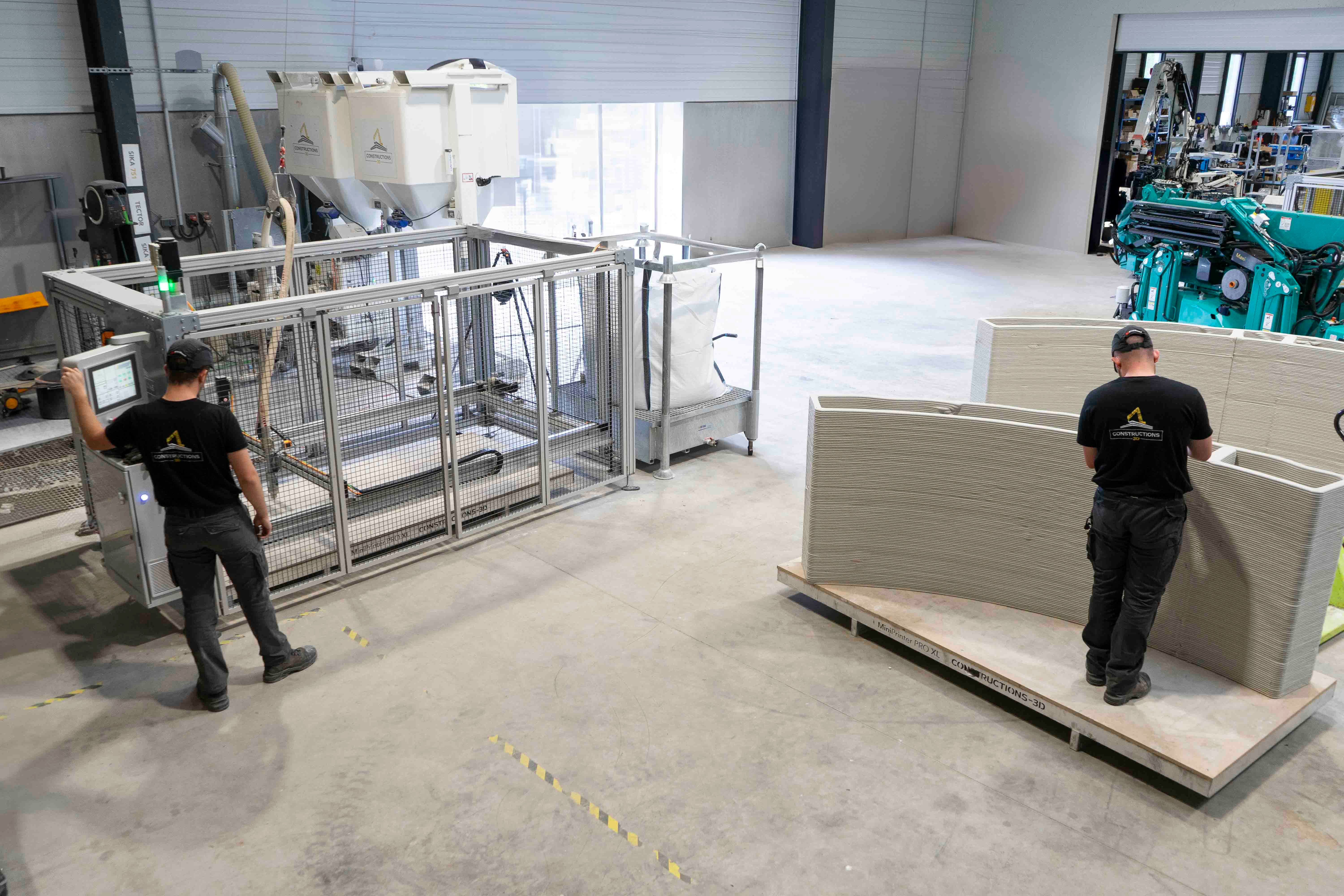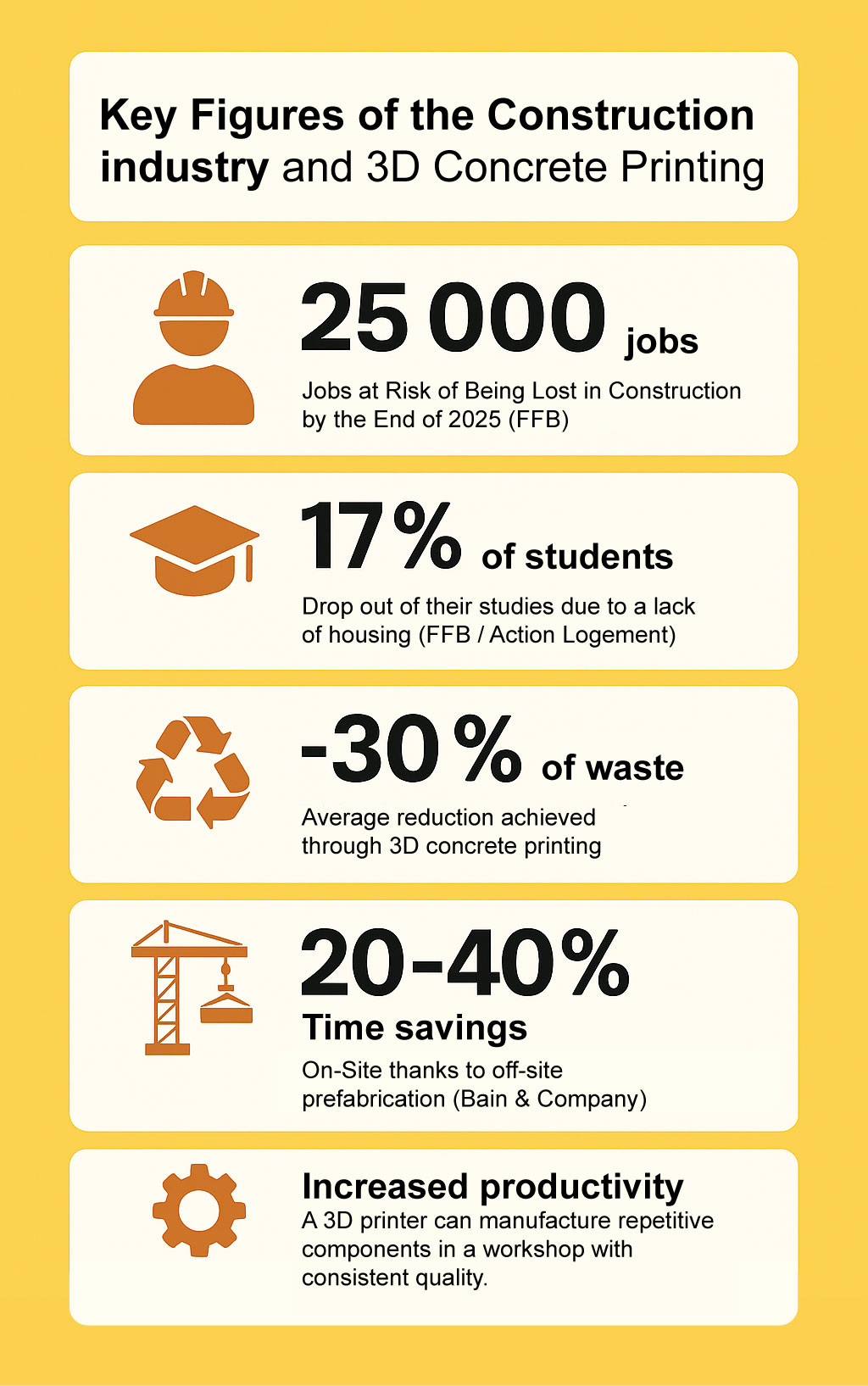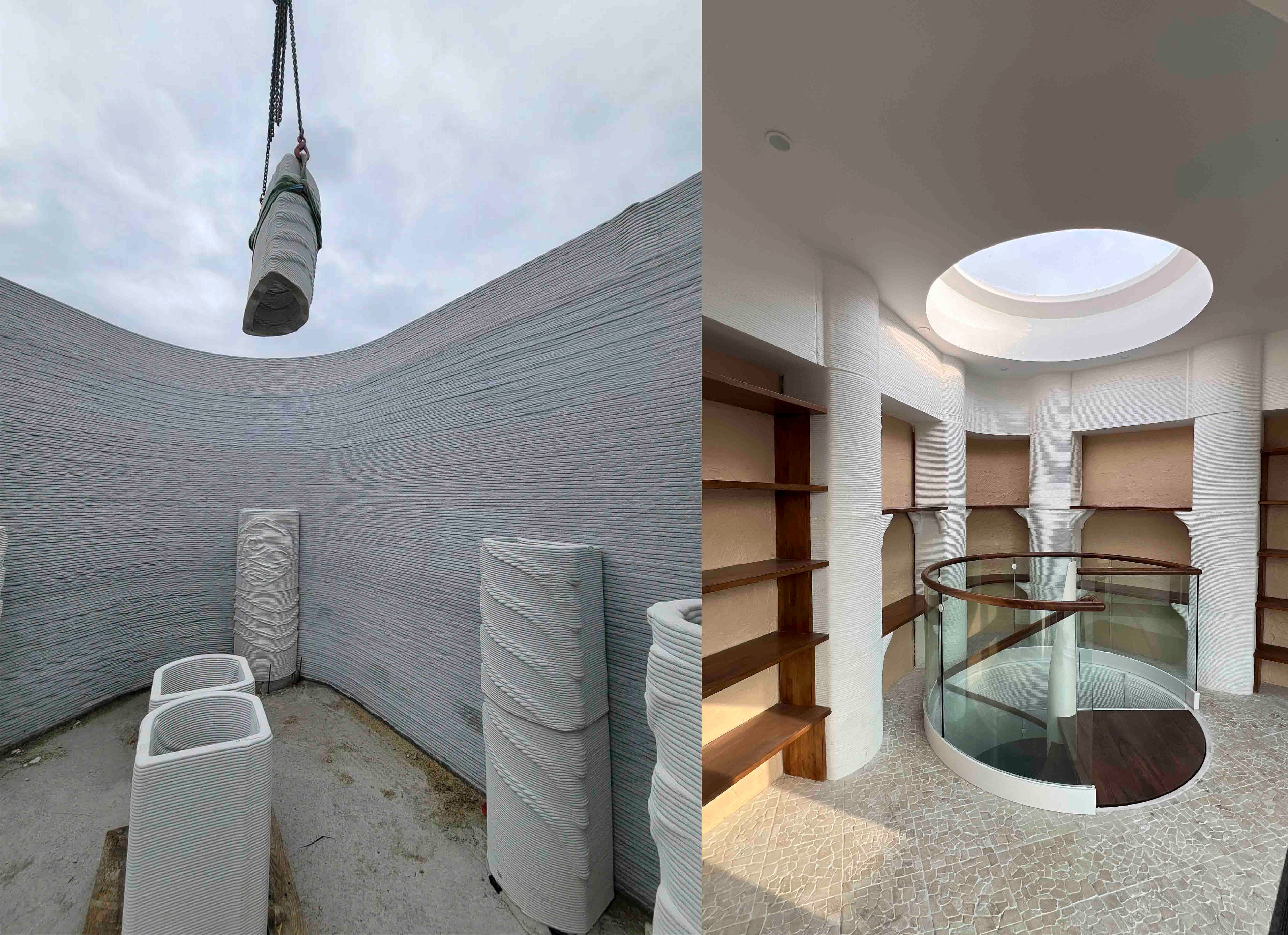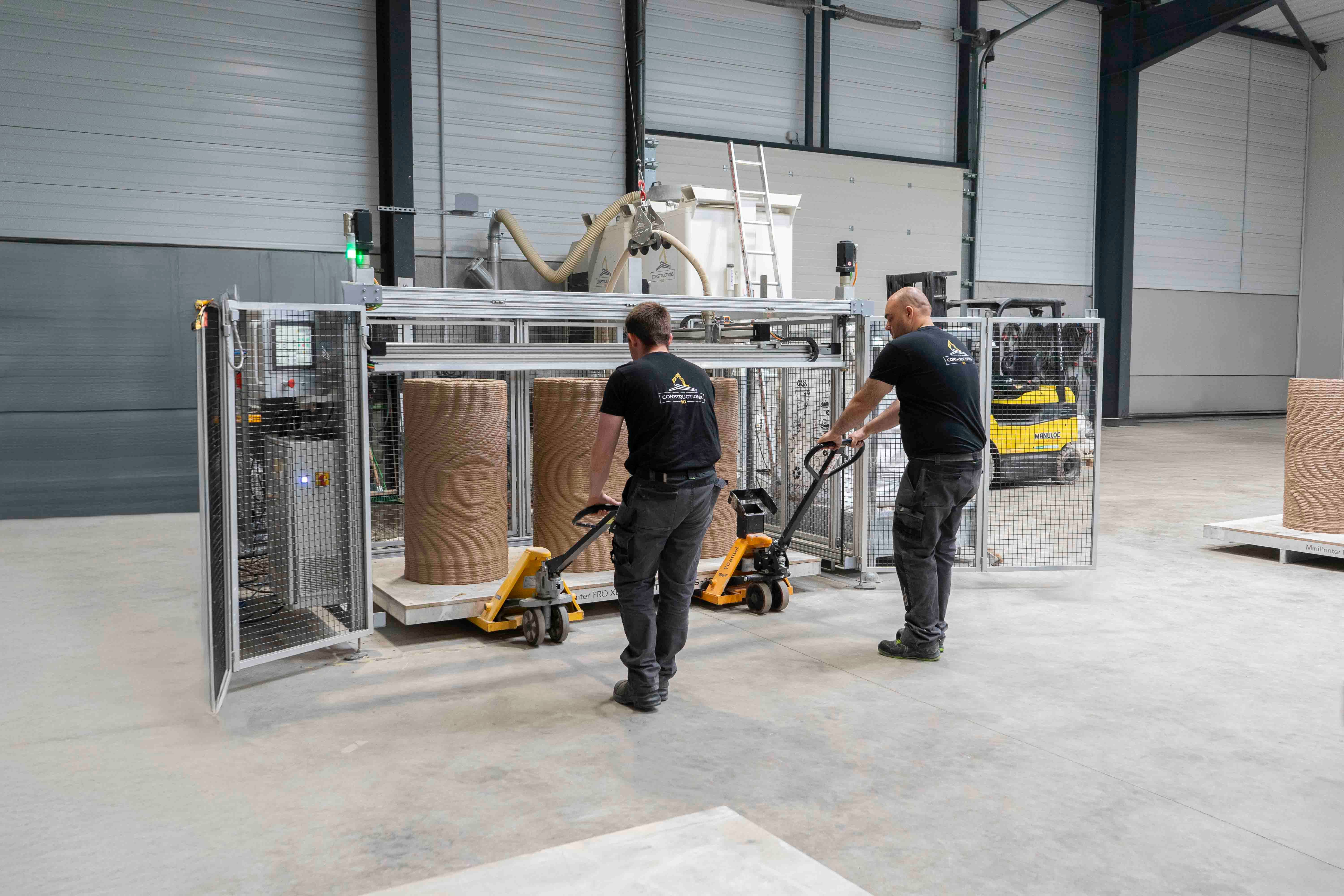Transforming Work Methods: An Imperative for the Construction Industry
As the housing crisis and economic instability continue to weigh on the construction industry, many voices are calling for the urgent adoption of new industrial methods. 3D concrete printing is emerging as a practical and complementary solution to traditional prefabrication.
Published on 15 October 2025

The Need for an Industrial Revival
At the Rencontre des Entrepreneurs de France, Olivier Salleron, President of the French Building Federation, warned:
“We are going to lose another 25,000 full-time equivalent jobs and several thousand companies by the end of the year due to a lack of concrete measures.”
This observation highlights the sector’s fragility in the face of uncertainty and the lack of appropriate measures. Yet, off-site prefabrication and 3D concrete printing make it possible to optimize resources through automated workshop production, reduced on-site labor dependency, and better cost control.

Off-Site Prefabrication as a Lever for Efficiency
This approach is shared by Pascal Andries (Orisha Construction) and Cyril Perrin (ADVAE), who, in an interview with Batinfo (May 2025), emphasized that:
“Off-site prefabrication is no longer an option but a concrete response to the need for productivity and quality.”
In practical terms, producing components in a controlled workshop environment improves quality, shortens lead times, and enhances job site safety. 3D concrete printing fits perfectly into this approach: it enables the production of technical walls, structural parts, or architectural elements in the workshop, which are then delivered directly to the construction site.
Accelerating the Adoption of Technologies
Adrien Bron, Construction Partner at Bain & Company, adds in La Tribune:
“The revival of the sector will depend on the faster adoption of new technologies and the industrialization of the value chain.”
3D concrete printing directly addresses this need: it bridges digital design and physical manufacturing without the heavy, time-consuming steps of formwork. This saving in both time and resources paves the way for a more agile production process, capable of meeting the urgent demand to build faster and better.

Innovation Serving a More Competitive Construction Industry
For Benoît Coquart, CEO of Legrand, innovation remains the key:
“Digital technology, robotics, and automation are paving the way for buildings that are more efficient, safer, and more competitive.”
These words directly echo the advantages of 3D concrete printing. Automation reduces physical strain, improves construction consistency, and cuts job site waste—by up to 30% compared to traditional methods.
Training the Next Generation
Finally, the human dimension is not forgotten. Joël Cuny, Director of ESTP, reminds us that:
“Training future engineers in digital tools and new construction methods is essential to support this transformation.”
3D concrete printing is thus becoming a leading educational tool. Schools and universities that incorporate it are already preparing a new generation of engineers and technicians capable of designing and managing these processes.

A Convergence of Perspectives
Whether from industry federations, manufacturers, or academic experts, the consensus is clear:
- Traditional construction methods are no longer sufficient to meet today’s challenges.
- Off-site prefabrication and 3D concrete printing offer practical solutions to industrialize and secure projects.
- Investment in innovation and training will determine the sector’s future competitiveness.
As Olivier Salleron sums it up:
“When the construction sector thrives, it drives the rest of the economy.”
Today, this momentum will depend on a profound transformation of work methods — and 3D concrete printing is one of the key technological building blocks of this change.
Toward an Inevitable Transformation?
The adoption of new work methods—particularly through 3D concrete printing—seems inevitable for the future of the industry. But what is still holding back this transformation? Is the construction sector ready to take the leap, or do cultural and structural barriers continue to slow down this essential evolution?
Ask your questions about concrete printing and our products...








